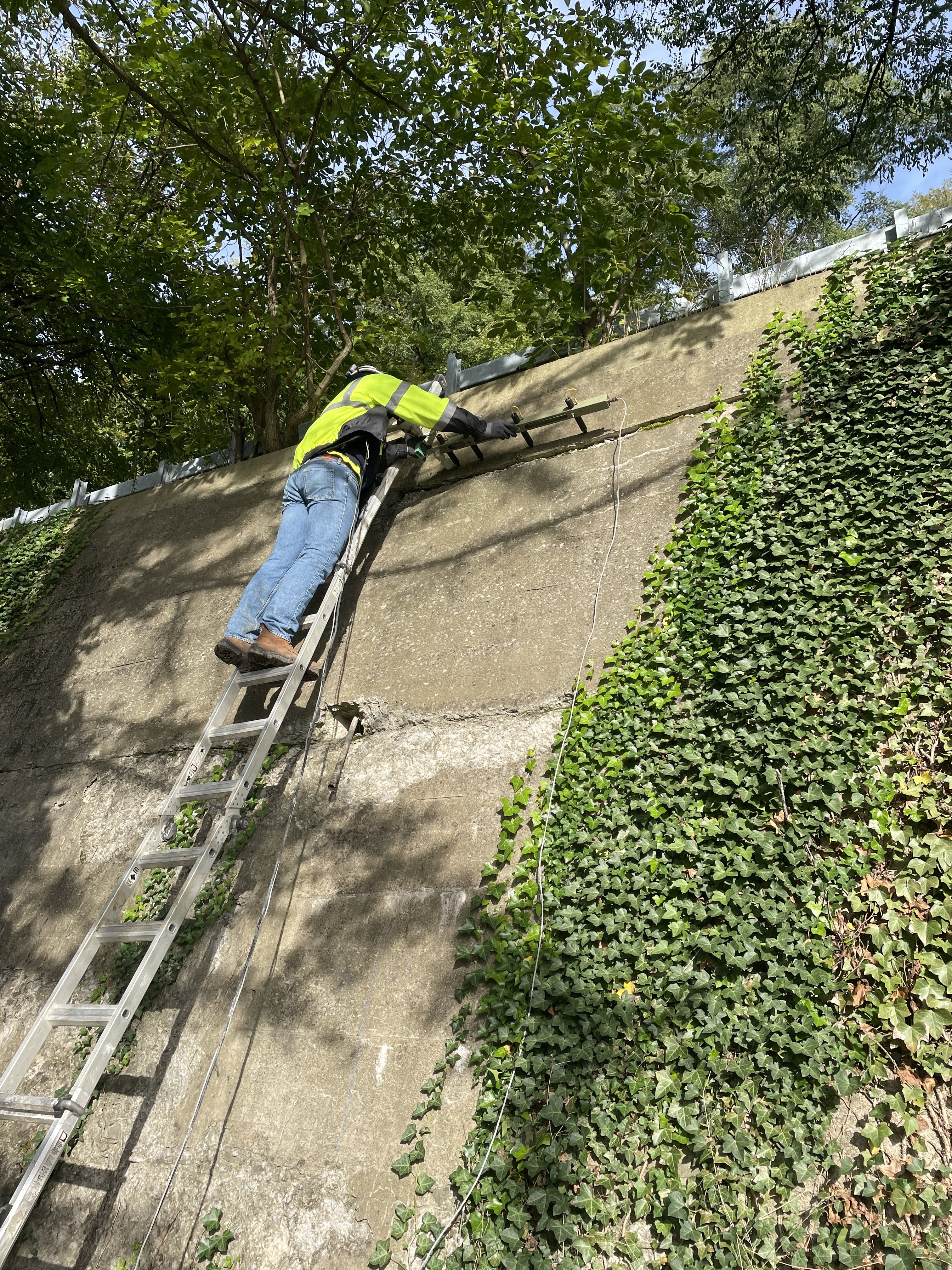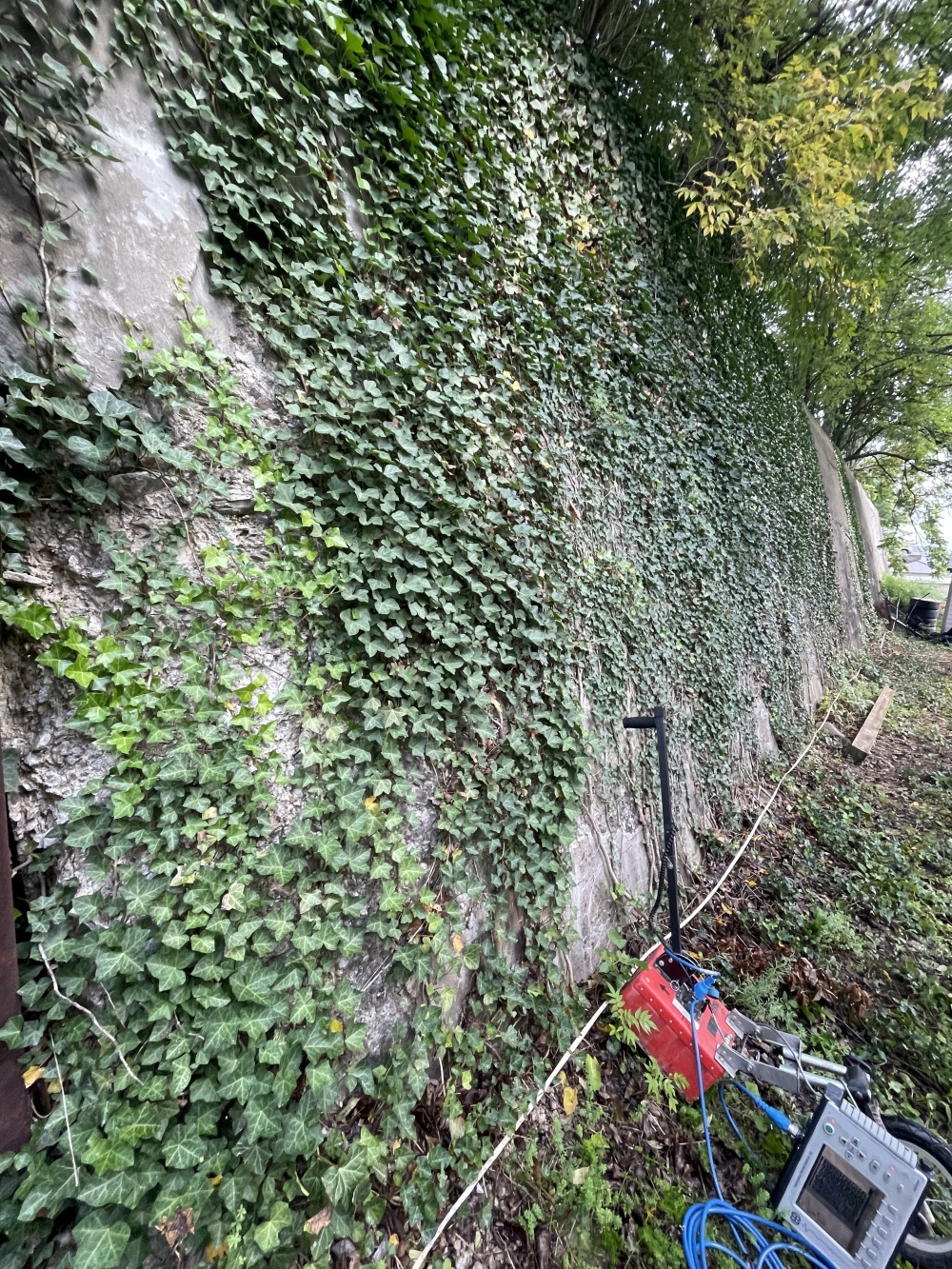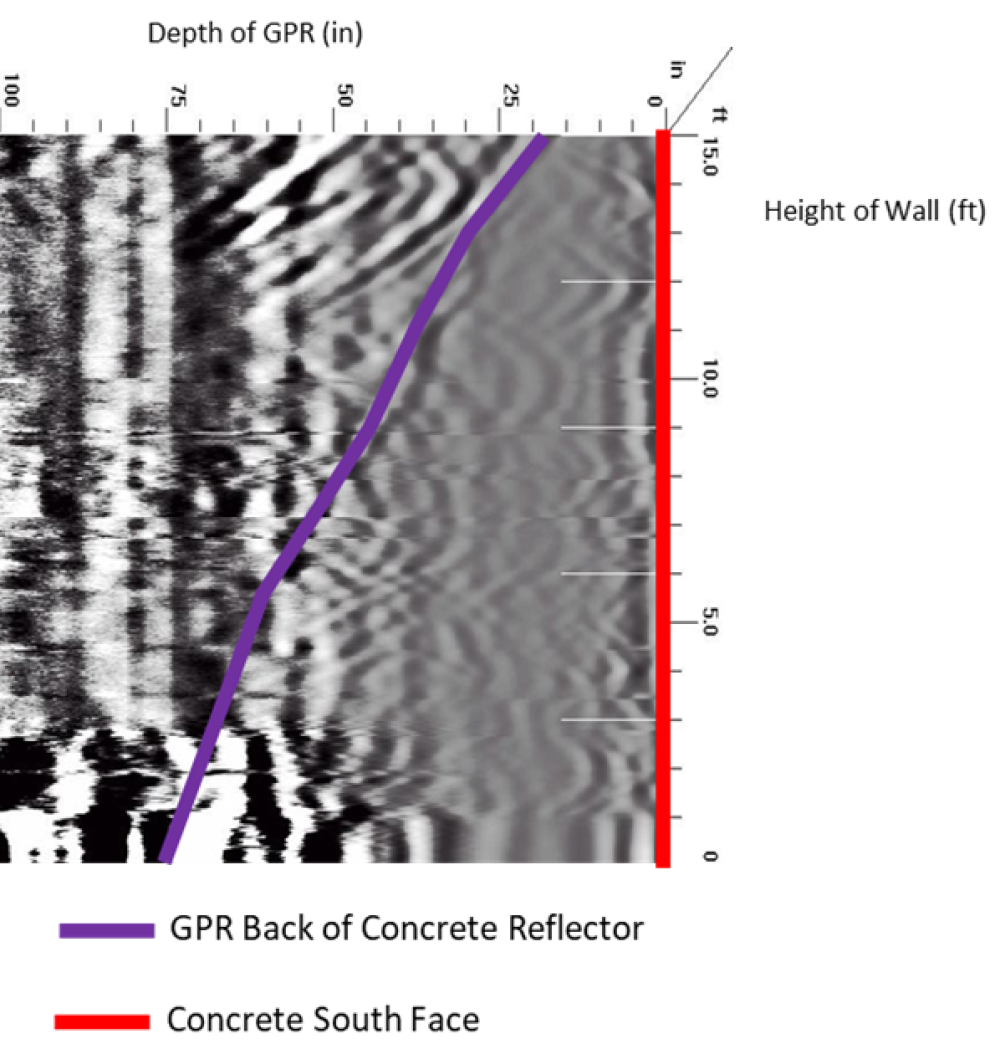LC Whitford Hammondsport Village


Services Applied by VCS Engineering
Summary
NDT Division used GPR to determine the reinforcing details and to calculate its thickness over the full height of the concrete retaining wall, which holds up Route 54A Pulteney St in Hammondsport, NY. Impact echo/pulse velocity (IE/PV) testing was used at the top of the wall to calculate the total height of the wall including the length extending below grade into the ground. IE/PV was also used across the face of the wall to collect surface wave velocities to determine the in-situ concrete compressive strength. The IE/PV result correlated well to the compression strength testing done in the lab, and the GPR confirmed there was no steel reinforcing in the structure.

Scope
NDT Division was contracted to determine the geometric configuration and overall condition of a concrete retaining wall structure to get a comprehensive assessment if the wall could be preserved. This retaining wall holds up a portion of Route 54A Pulteney St. in Hammondsport, NY. The wall exhibited signs of deterioration and spalling was visible at/around the pour joints. NYSDOT, the owner of the wall, had no drawings or plans showing the designed or as-built conditions. NYSDOT wanted NDT Division to determine the existing dimensions and condition of the wall. The required dimensions included: thickness, height, back batter and if any steel reinforcing was present. The NYSDOT also wanted to know the integrity/strength of the concrete and to identify any areas of internal cracking or voids that might be present.
NDT Division conducted nondestructive testing with ground penetrating radar (GPR) and impact echo/pulse velocity (IE/PV) equipment to determine the requested dimensions and concrete condition assessment. Using GPR, NDT Division was able to scan the wall to assess the steel reinforcing in the wall and determine the wall thickness over the full height and show the battered slope of the back face. The IE/PV data was also collected from the top to determine the height of the wall. Data to determine the concrete compressive strength was calculated from the surface wave velocities at many locations. NDT Division also used a core drill to extract concrete material samples to be sent to a lab for compressive strength verification testing.

Solution
The overall wall height, thickness and batter was confirmed by the IE/PV testing by measuring the thickness frequencies from the front wall face to the back of the wall. Data was collected along the full height of the wall (top to the bottom). Concrete compressive strength results from the IE/PV testing on the entire wall face correlated well with the lab testing and confirmed weak concrete (less than 3000 PSI) in many locations. During concrete core extraction NDT Corp discovered that the coarse aggregate used in the wall was on average 3” rounded river stone and was not well bonded. This resulted in cores breaking apart shorter than the desired length for compression testing. NDT Division was able to use a larger core barrel to extract proper length cores despite the poorly bonded aggregate. GPR indicated there was no reinforcement in this wall.